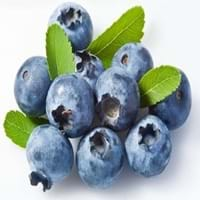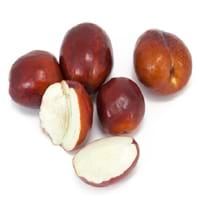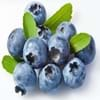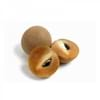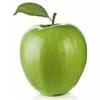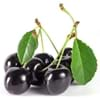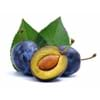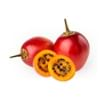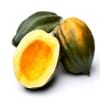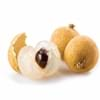Health Benefits
Cancer prevention, Cures gastro-intestinal troubles, Improves night vision, Improves stomach health, Prevents diabetes, Prevents high blood pressure, Reduces blood circulation problems
Cancer prevention, Diarrhea treatment, Improves muscular strength, Liver health, Maintains hormonal balance, Reduces nervous tension, Reduces blood circulation problems, Reduces stress, Regulation of heart rate, Treatment of hysteria
General Benefits
Fights against infections, Helps in weight loss, Prevents blood clotting in vessels, Treatment of urinary tract infections
Anti oxidant properties, Digestive aid, Flu treatment, Helps in weight loss, Strengthens bones, Treatment of common cold
Skin Benefits
Anti-aging benefits, Nourishes skin, Protects against skin damage
Heals sunburn, Hydrates skin, Reduces wrinkles, Skin rejuvenation, Skin revitalization
Hair Benefits
Prevents hair loss
Promotes longer and healthier hair, Protects hair
Allergy Symptoms
Not Available
Abdominal pains, Breathing difficulty, Diarrhea, Hives, Itching in eyes, Itching of nose, Nasal congestion, Redness of eyes, Runny nose, Sneezing, Wheezing
Side Effects
Decrease in blood sugar levels, Diarrhoea, Dizziness, Headache, Internal bleeding, Stomach pain
Decrease in blood sugar levels, Intense headache
Lactating Women
Yes
Not Available
Best Time to Eat
As a snack in the late afternoon, Don't consume at night and before bed, Eat the fresh ones, avoid mixing with any other foods, don't eat after meal., Morning time (before lunch)
As a snack in the late afternoon, Don't consume at night and before bed, Morning time (before lunch), Strictly avoid empty stomach
Vitamin B5 (Pantothenic Acid)
Not Available
Vitamin B9 (Folic acid)
Not Available
Vitamin C (Ascorbic Acid)
Vitamin E (Tocopherole)
Not Available
Vitamin K (Phyllochinone)
Not Available
Lutein+Zeaxanthin
Not Available
Calories in Fresh Fruit with Peel
Calories in Fresh Fruit without Peel
Not Available
Not Available
Calories in Frozen Form
Not Available
Not Available
Calories in Dried Form
Not Available
Calories in Canned Form
Not Available
Not Available
Calories in Juice
Not Available
Calories in Jam
Not Available
Calories in Pie
Not Available
Season
Summer
Autumn, Summer
Varieties
Dwarf bilberry, Piper, bog blueberry, Northern bilberry, Mountain bilberry and Oval-leaved bilberry
Honey Jar, Sugar Cane, Li, Shanxi Li, Sherwood, Chico, Silverhill, Tigertooth, Winter Delight and Lang
Color
Dark purple
Green, Red, Yellow
Inside Color
Light Green
White
Soil Type
Moist, Well-aerated
Sandy, Well-drained
Climatic Conditions
Cold
Warm to hot climate
Facts about
- Bilberries are used in manufacturing of alcoholic drinks.
- They are used to improve aromas of sorbets.
- The green extract of it's leaves is used in textile industry as natural dye.
- Pigment extracted from Indian jujube is used for silk dyeing in Burma.
- In Korea, jujube wood is used to make wind instrument taepyeongso.
- Fresh jujube is known as Chinese apple & dried form is called as Chinese date.
Other Countries
Denmark, Finland, Iceland, Sweden
Bangladesh, India, Iran, Korea, Lebanon, Pakistan
Top Importer
United States of America
United States of America
Botanical Name
Vaccinium myrtillus
Ziziphus zizyphus
Synonym
blaeberry, whinberry, European blueberry, whortleberry
Ziziphus jujuba or Ziziphus mauritania or Zizyphus jujuba
Subkingdom
Tracheobionta
Tracheobionta
Division
Magnoliophyta
Magnoliophyta
Class
Magnoliopsida
Magnoliopsida
Subclass
Dillenhidae
Rosidae
Family
Ericaceae
Rhamnaceae
Species
Vaccinium myrtillus
Z. zizyphus
Generic Group
Heath
Not Available
Difference Between Bilberry and Jujube
We might think that Bilberry and Jujube are similar with respect to nutritional value and health benefits. But the nutrient content of both fruits is different. Bilberry and Jujube Facts such as their taste, shape, color, and size are also distinct. The difference between Bilberry and Jujube is explained here.
The amount of calories in 100 gm of fresh Bilberry and Jujube with peel is 44.00 kcal and 79.00 kcal and the amount of calories without peel is Not Available and Not Available respectively. Thus, Bilberry and Jujube belong to Low Calorie Fruits and High Calorie Fruits category.These fruits might or might not differ with respect to their scientific classification. The order of Bilberry and Jujube is Ericales and Rosales respectively. Bilberry belongs to Ericaceae family and Jujube belongs to Rhamnaceae family. Bilberry belongs to Vaccinium genus of Vaccinium myrtillus species and Jujube belongs to Ziziphus genus of Z. zizyphus species. Beings plants, both fruits belong to Plantae Kingdom.
